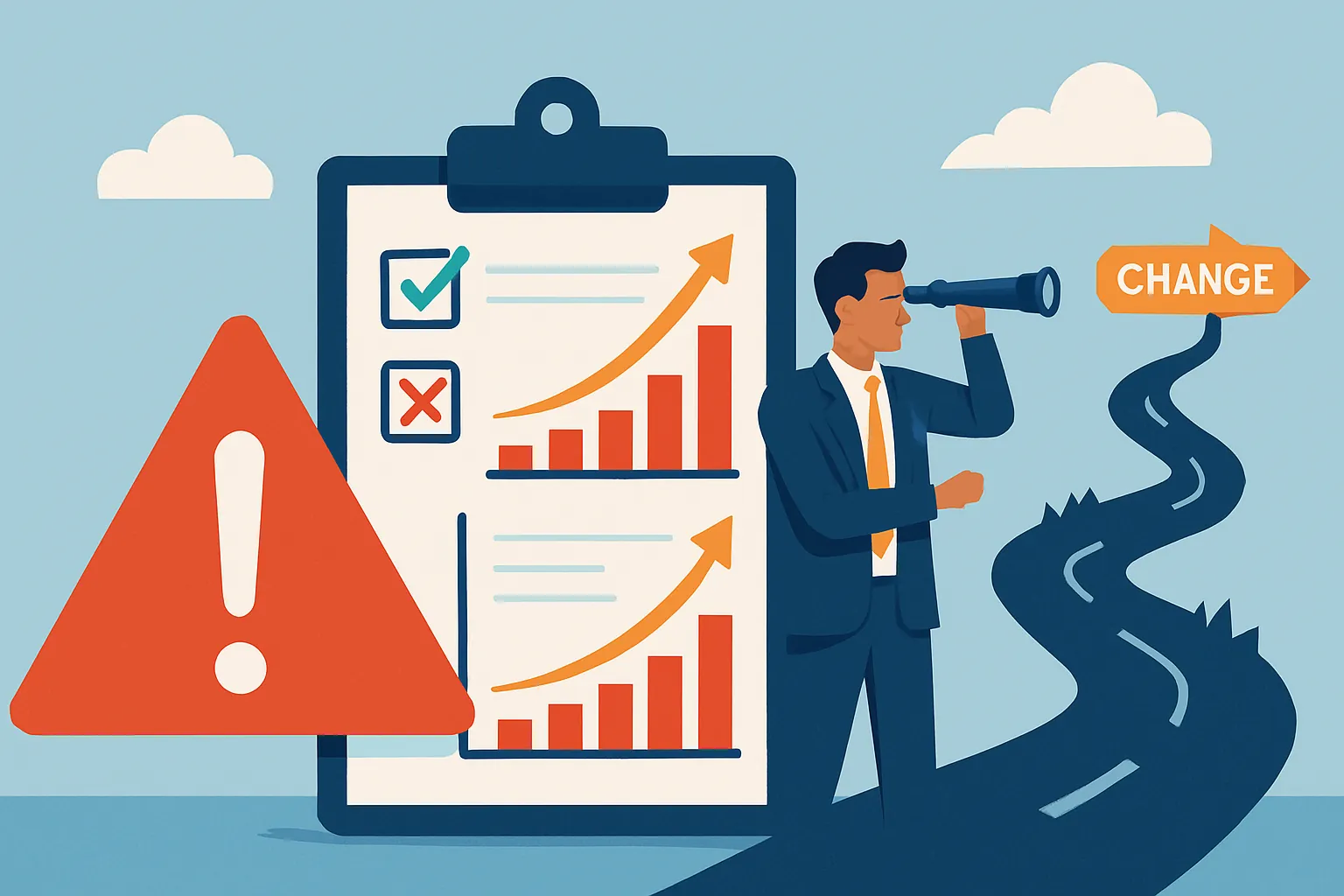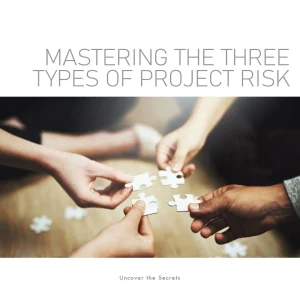Introduction to Change Management
Change management is a critical component of project management that focuses on preparing, supporting, and helping individuals, teams, and organizations in making organizational change. It encompasses a structured approach to ensure that changes are implemented smoothly and successfully, minimizing resistance and maximizing engagement. In the context of project management, change management involves not only the technical aspects of managing project deliverables but also the human side of change, which is often the most challenging.
Change is an inevitable part of any project. Whether driven by external factors such as market dynamics, regulatory requirements, or internal factors like organizational restructuring, change can significantly impact project outcomes. The ability to adapt to change is crucial for project success, as it can influence timelines, budgets, and stakeholder satisfaction. Projects that fail to effectively manage change often encounter increased risks, leading to delays, cost overruns, and ultimately, project failure. Therefore, recognizing and addressing the inevitability of change is essential for project managers and change leaders alike.
To navigate the complexities of change, proactive risk assessment serves as a vital tool. A risk assessment in change management involves identifying, evaluating, and prioritizing potential risks that could hinder the success of change initiatives. By systematically analyzing risks, project managers can develop strategies to mitigate them, ensuring that the change process is as smooth as possible. This proactive approach not only helps in anticipating challenges but also empowers teams to respond effectively, fostering a culture of resilience and adaptability within the organization. Ultimately, integrating risk assessment into change management practices enhances the likelihood of successful project outcomes and supports the overall goals of the organization.
Understanding Risk Assessment
Risk assessment is a critical process that involves identifying, analyzing, and planning responses to potential risks that could impact a project. This proactive approach is essential for ensuring that change initiatives are successful and that organizations can navigate the complexities of change effectively.
Definition and Significance of Risk Assessment
Risk assessment is the systematic process of identifying and analyzing risks to determine their probability of occurrence and potential impact on a project. It serves as a foundational element in project management, as it allows project managers and change leaders to anticipate challenges and devise strategies to mitigate them. The significance of risk assessment lies in its ability to minimize uncertainties, manage stakeholder expectations, and keep projects on track, ultimately leading to more successful change initiatives [2][4].
Key Components of Risk Assessment
- Risk Identification: This initial step involves documenting potential risks that could affect the project. It is crucial to categorize these risks to understand their nature and scope. Effective risk identification ensures that no significant risks are overlooked, which could derail the change initiative [5][6].
- Risk Analysis: Once risks are identified, the next step is to analyze them systematically. This involves assessing the likelihood of each risk occurring and evaluating its potential impact on the project. By understanding the severity and probability of risks, project managers can prioritize them and focus on the most critical issues [2][3].
- Response Planning: After analyzing the risks, project managers must develop response strategies. This includes determining how to mitigate, transfer, accept, or avoid each risk. A well-structured response plan is essential for addressing risks proactively, ensuring that the project can adapt to changes and challenges as they arise [4][11].
Integration of Risk Assessment into Change Management
Integrating risk assessment into the change management process is vital for fostering a culture of continuous improvement and proactive risk identification within an organization. By embedding risk assessment into the change management framework, organizations can better anticipate and respond to challenges, ultimately increasing their resilience and ability to thrive in dynamic environments [15].
Moreover, conducting risk assessments in conjunction with change initiatives ensures that the assessments are relevant and impactful. This alignment allows for diligent planning, effective stakeholder engagement, and clear communication, which are essential for optimizing the strategic benefits of change initiatives [13].
The Interconnection Between Risk Assessment and Change Management
The ability to navigate change effectively is paramount. One of the most critical components of this navigation is the practice of risk assessment. By proactively identifying and addressing potential challenges, project managers and change leaders can significantly enhance the likelihood of successful change initiatives. Here’s how risk assessment plays a vital role in change management.
Identifying Potential Challenges
Risk assessment serves as a foundational tool in recognizing the various challenges that may arise during change initiatives. By systematically evaluating the potential risks associated with a change, project managers can pinpoint specific areas of concern that could derail progress. This process involves gathering quality data and insights from past projects, as well as consulting subject matter experts to ensure a comprehensive understanding of the risks involved [1][3].
For instance, a change management risk assessment typically includes identifying, assessing, and mitigating risks that could compromise the success of the initiative [4]. This proactive approach allows teams to prepare for obstacles before they manifest, thereby reducing the likelihood of disruptions.
Forecasting Risks to Minimize Negative Impacts
The importance of forecasting risks cannot be overstated. By anticipating potential issues, project managers can develop strategies to minimize their negative impacts. This involves prioritizing identified risks based on their likelihood and potential impact on the project [3].
Effective risk management not only helps in addressing immediate concerns but also aids in contingency planning. Change management assessments can guide teams in identifying potential risks and obstacles early in the process, allowing for timely interventions [9]. For example, utilizing tools such as SWOT analysis or PEST analysis can provide valuable insights into the external and internal factors that may affect the change initiative [15].
Case Studies and Examples
Numerous case studies illustrate the positive outcomes of integrating risk assessment into change management processes. For instance, a project that implemented a comprehensive risk assessment framework prior to a major organizational change was able to identify key stakeholder concerns early on. By addressing these concerns through targeted communication and engagement strategies, the project team not only mitigated resistance but also fostered a sense of ownership among stakeholders, leading to a smoother transition [5].
Another example can be seen in a technology implementation project where risk assessments revealed potential training gaps among staff. By forecasting this risk, the project team was able to develop a robust training program that equipped employees with the necessary skills, ultimately resulting in a successful adoption of the new system [6].
Proactive Risk Assessment Strategies
Particularly during change initiatives, proactive risk assessment is crucial for ensuring success. By identifying potential risks early and implementing effective strategies, project managers and change leaders can navigate the complexities of change with greater confidence. Here are some actionable strategies to enhance risk assessment in your projects:
Tools and Techniques for Conducting Risk Assessments
- SWOT Analysis: This strategic planning tool helps identify Strengths, Weaknesses, Opportunities, and Threats related to a project. By analyzing these four aspects, project managers can gain insights into internal and external factors that may impact the change initiative. This holistic view aids in pinpointing potential risks and opportunities for mitigation [6].
- Risk Matrix: A risk matrix is a visual tool that helps prioritize risks based on their likelihood and impact. By categorizing risks into different levels of severity, project managers can focus their efforts on the most critical risks that could derail the project. This structured approach allows for a more organized response to potential challenges [4].
- Checklists and Data Analysis: Utilizing checklists can ensure that no potential risk is overlooked during the assessment process. Additionally, analyzing relevant data sources can provide valuable insights into historical risks and trends, enabling project managers to make informed decisions [2][9].
Importance of Stakeholder Engagement
Engaging stakeholders is vital in the risk assessment process. Stakeholders often possess unique insights and perspectives that can help identify risks that may not be immediately apparent to the project team. By fostering open communication and collaboration, project managers can create an environment where stakeholders feel comfortable sharing their concerns and experiences. This inclusive approach not only enhances the identification of risks but also builds trust and commitment among team members [3][7].
Continuous Monitoring and Adaptive Strategies
Change is inherently dynamic, and risks can evolve throughout the project lifecycle. Therefore, continuous monitoring of identified risks is essential. This involves regularly reviewing the risk landscape and adjusting strategies as necessary. Implementing adaptive strategies allows project managers to respond swiftly to new risks or changes in existing ones, ensuring that the project remains on track [8][12].
Moreover, establishing a culture of risk accountability within the team encourages every member to take ownership of their responsibilities regarding risk management. This collective approach to risk assessment fosters a proactive mindset, where team members are vigilant and responsive to potential challenges [3][14].
Common Risks in Change Management
Change is a constant factor that can lead to both opportunities and challenges. Understanding the common risks associated with change initiatives is crucial for project managers and change leaders. Here are some typical risks encountered during change management:
- Resistance to Change: One of the most prevalent risks is resistance from stakeholders, which can stem from a lack of understanding or buy-in regarding the change objectives. When stakeholders do not agree with or comprehend the reasons behind the change, it can lead to pushback, undermining the initiative’s success [15].
- Inadequate Training: Insufficient training for employees can hinder the implementation of new processes or systems. If team members are not adequately prepared to adapt to changes, it can result in decreased productivity and increased frustration, ultimately affecting project outcomes [15].
- Miscommunication: Effective communication is vital during any change initiative. Miscommunication can lead to misunderstandings about the change process, objectives, and expectations. This can create confusion and misalignment among team members, which can derail the project [15].
- Scope Creep: Changes in project scope can occur when additional features or requirements are added without proper assessment. This can stretch resources thin and lead to delays, impacting the overall success of the project [8].
- Performance Risk: Changes can affect the performance of teams and systems. If the new processes are not well-integrated or if there is a lack of support, it can lead to performance issues that compromise project goals [8].
Potential Impact of These Risks on Project Success
The risks outlined above can have significant repercussions on the success of change initiatives. For instance, resistance to change can lead to delays in implementation, while inadequate training can result in errors and inefficiencies. Miscommunication can create a lack of clarity, causing teams to work at cross purposes. Ultimately, these risks can lead to increased costs, missed deadlines, and failure to achieve desired outcomes, which can undermine the overall objectives of the project [15].
Mitigating Risks Through Proactive Risk Assessment
Proactive risk assessment plays a vital role in identifying and addressing these risks before they escalate into larger issues. By conducting a thorough risk assessment, project managers can:
- Identify Potential Risks: The first step is to gather a comprehensive list of risks that could arise during the change process. This involves engaging with stakeholders to understand their concerns and perspectives [13].
- Prioritize Risks: Once risks are identified, they should be prioritized based on their likelihood and potential impact. This helps focus efforts on the most critical risks that could derail the change initiative [11].
- Develop Mitigation Strategies: For each identified risk, project managers should develop strategies to mitigate their impact. This could include creating training programs to address inadequate training, establishing clear communication channels to reduce miscommunication, and engaging stakeholders early to minimize resistance [4][11].
- Monitor and Adjust: Continuous monitoring of risks throughout the change process is essential. This allows project managers to adjust their strategies as needed and respond to new risks that may arise [9].
By implementing a proactive risk assessment approach, project managers can navigate the complexities of change management more effectively, leading to successful change initiatives that align with organizational goals.
Real-world Applications of Risk Assessment in Change Management
The integration of risk assessment into change management processes is not just beneficial; it is essential for ensuring successful outcomes. By proactively identifying and mitigating potential risks, organizations can navigate the complexities of change initiatives with greater confidence. Below, we explore success stories from organizations that have effectively utilized risk assessment in their change management strategies, analyze the factors that contributed to their success, and discuss the importance of continuous improvement in this process.
Success Stories of Effective Risk Assessment
- Case Study: Launching a New Software Product
- Organization: A mid-sized tech company aimed to develop and launch a new web-based project management software application.
- Risk Assessment Implementation: The project team conducted a thorough risk assessment at the outset, identifying potential risks such as technical challenges, market competition, and user adoption issues.
- Outcome: By addressing these risks early, the team was able to implement targeted strategies that included additional training for users and a phased rollout of the software. This proactive approach led to a successful launch, with user adoption rates exceeding initial projections by 30% [13].
- Case Study: Organizational Restructuring
- Organization: A large manufacturing firm underwent a significant restructuring to improve efficiency and reduce costs.
- Risk Assessment Implementation: The leadership team utilized risk assessment to identify potential impacts on employee morale, productivity, and operational disruptions. They engaged employees in the process, gathering feedback and addressing concerns.
Analyzing What Worked Well
- Proactive Identification of Risks: Both case studies highlight the importance of identifying risks early in the change process. By understanding potential challenges upfront, organizations can develop strategies to mitigate them before they escalate into larger issues [3][4].
- Stakeholder Engagement: Engaging stakeholders throughout the risk assessment process proved crucial. In the restructuring case, involving employees helped to alleviate concerns and foster a sense of ownership over the changes being implemented [5].
- Adaptability and Flexibility: Successful organizations demonstrated adaptability in their risk management strategies. They were willing to adjust their plans based on ongoing assessments and feedback, which allowed them to respond effectively to emerging risks [8].
Lessons Learned
- Documentation of Lessons Learned: Each organization documented their experiences, creating a repository of lessons learned that can inform future projects. This practice not only aids in continuous improvement but also serves as a valuable resource for project teams facing similar challenges in the future [7].
- Regular Review and Monitoring: Continuous monitoring of risks and project progress is essential. Regular reviews help teams identify new risks that may arise as the project evolves, ensuring that risk management remains a dynamic and integral part of the change process [8].
Continuous Improvement Process
Implementing risk assessments is not a one-time activity; it is an ongoing process that requires commitment to continuous improvement. Organizations should:
- Establish a Feedback Loop: Create mechanisms for gathering feedback from team members and stakeholders throughout the change initiative. This feedback can inform adjustments to risk management strategies and enhance overall project outcomes [6].
- Invest in Training and Development: Equip project managers and change leaders with the skills and knowledge necessary to conduct effective risk assessments. Training programs can help build a culture of risk awareness within the organization [2].
- Utilize Technology: Leverage project management tools and software that facilitate risk assessment and monitoring. These tools can streamline the process and provide real-time insights into potential risks [11].
Conclusion: The Future of Change Management
In the ever-evolving landscape of project management, the integration of risk assessment into change management processes has become not just beneficial, but essential. As organizations face increasing pressures to adapt and innovate, the ability to proactively identify and mitigate risks associated with change initiatives is paramount. Here are the key takeaways that underscore the importance of this integration:
- Importance of Risk Assessment: Proactive risk assessment serves as a foundational element in successful change management. By systematically evaluating potential risks, project managers can better prepare for challenges that may arise during the implementation of change initiatives. This approach not only enhances the likelihood of project success but also fosters a culture of resilience within the organization [1][4].
- Adopting a Proactive Mindset: Project managers and change leaders are encouraged to cultivate a proactive mindset when it comes to risk assessment. This involves not only identifying risks but also prioritizing them based on their likelihood and potential impact. Utilizing tools such as Change Impact Assessments and stakeholder engagement strategies can significantly improve the effectiveness of risk management efforts [3][8]. By anticipating challenges, teams can develop contingency plans that ensure smoother transitions during periods of change.
- Ongoing Evolution of Practices: The field of project management is continuously evolving in response to the complexities of change. As organizations increasingly recognize the value of structured risk assessments, methodologies and frameworks are being refined to better address the unique challenges posed by change initiatives. This evolution reflects a broader trend towards integrating risk management into the core of project management practices, ensuring that teams are equipped to navigate the uncertainties of change effectively [2][10].
In conclusion, the future of change management lies in the proactive assessment of risks. By embedding risk assessment into the change management framework, project managers can not only enhance their project outcomes but also contribute to a more agile and responsive organizational culture. Embracing this proactive approach will empower teams to face the challenges of change head-on, ultimately leading to more successful and sustainable change initiatives.
Find out more about Shaun Stoltz https://www.shaunstoltz.com/about/.
This post was written by an AI and reviewed/edited by a human.



